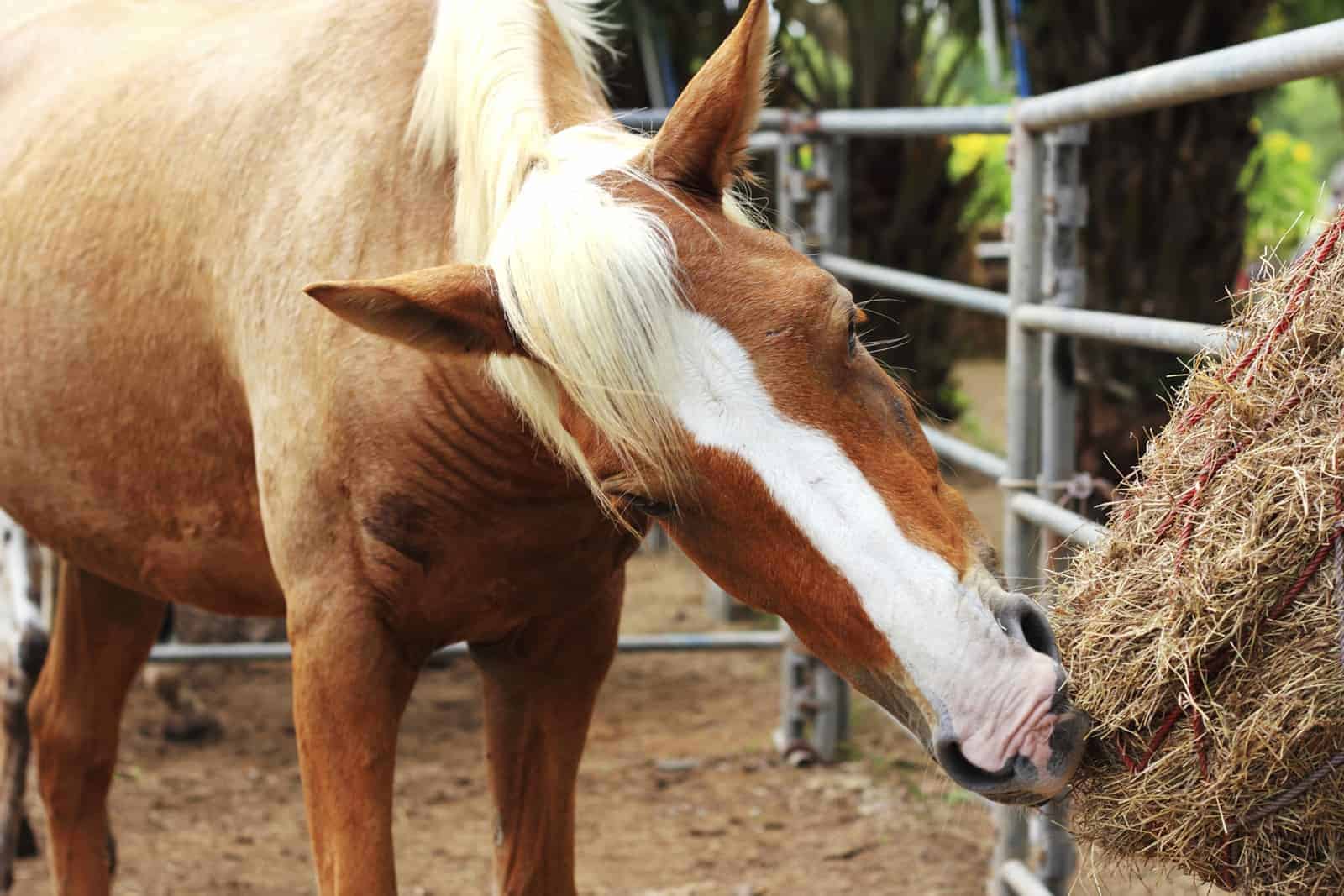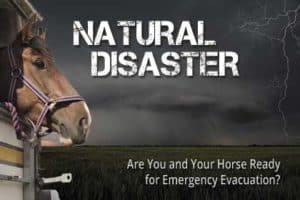Feeding Evacuated Horses
- Posted by Clair Thunes, PhD

We know we should make changes in our horse’s diets slowly, but when natural disasters occur that’s not always possible. The problem with natural disasters is their unpredictability. You have no idea for how long you will be evacuated for and what will remain when you return. Will your hay barn with winter’s stock still be there? Will you still have fencing and be able to turn your horse out as normal? Perhaps your barn will be gone and you’ll have to turn him out, possibly with other unfamiliar horses. What about the feed store? Will it still be operational and will feed be easily available? All these are unknowns. What results is a scenario where you just do the best you can.
Here are some things to consider when faced with an approaching natural disaster or in the aftermath of such an event.
Evacuate Early

When told to evacuate do your best to do so, and do it early. Try to take with you enough feed and water for each horse to last at least several days, preferably more. This will enable you to feed your horse as you do currently, and if the situation dictates that feed changes will need to be made you have enough current feed to slowly transition to something new. The same is true if you decide to shelter in place. Don’t forget about water even when sheltering in place. Remember that if you are on a system that requires a pump but power goes out, you won’t have water until it’s restored. Horses need 5 to 12 gallons of water per day per 1,000 pounds of body weight, more if they’re lactating
Create a free account with TheHorse.com to view this content.
TheHorse.com is home to thousands of free articles about horse health care. In order to access some of our exclusive free content, you must be signed into TheHorse.com.
Start your free account today!
Already have an account?
and continue reading.

Written by:
Clair Thunes, PhD
Related Articles
Stay on top of the most recent Horse Health news with
















4 Responses
We live in NE FL. Several years ago i went to an Emergency Preparedness seminar for Equines and it was very helpful. One of the take a ways i remember was in the event of a hurricane that’s approaching-NEVER shut your horse(s) in the barn. The horse has to be able to escape flying debri and horses have been injured or killed in barns that have collapsed during hurricanes.
I had to evacuate my horses during the fires last year in Santa Rosa, CA. Not only should you have ID on your horse (I have name & phone number tags on halters), but be sure to keep copies of registration papers, vaccination records and other health related information in your tow vehicle and/or trailer. That way they are always with you – you don’t have to go looking for them in a tense, emergency situation where you may have just enough time to get out.
Keep your gas tank full – you never know how far you’ll have to travel.
And yes, grab as much of your horse’s regular feed as you can – we ended up being away from our property for 10 days. I had enough hay for about the first 5 days and was fortunate to be able to buy similar hay at a feed store outside of the fire zone.
Discuss possibilities and make plans for where you might go BEFORE it ever becomes necessary, and have contact info programmed into your phone for those places . Many fairgrounds are evacuation centers for horses and livestock during emergencies, but it can be a very hectic environment, scary for a lot of horses. Line up other alternatives if you don’t think your horse would do well in the midst of much commotion, cattle, pigs, lamas, etc..
Those are great suggestions, Gayle. Thanks for sharing!
Greetings! Good article! A few other suggestions for emergency evacuations: Be sure to prep you and your horse/s ahead of time. I.e. introduce your horse to some sort of flavor water by adding gatorade, apple juice, etc. to help with water consumption, practice trailer loading, make sure vaccinations and coggins are current, tie name tags with owners info into manes, practice moving your horses in a high energy situation.
You may never have to use any of the things noted in the article or here but better to have a plan.